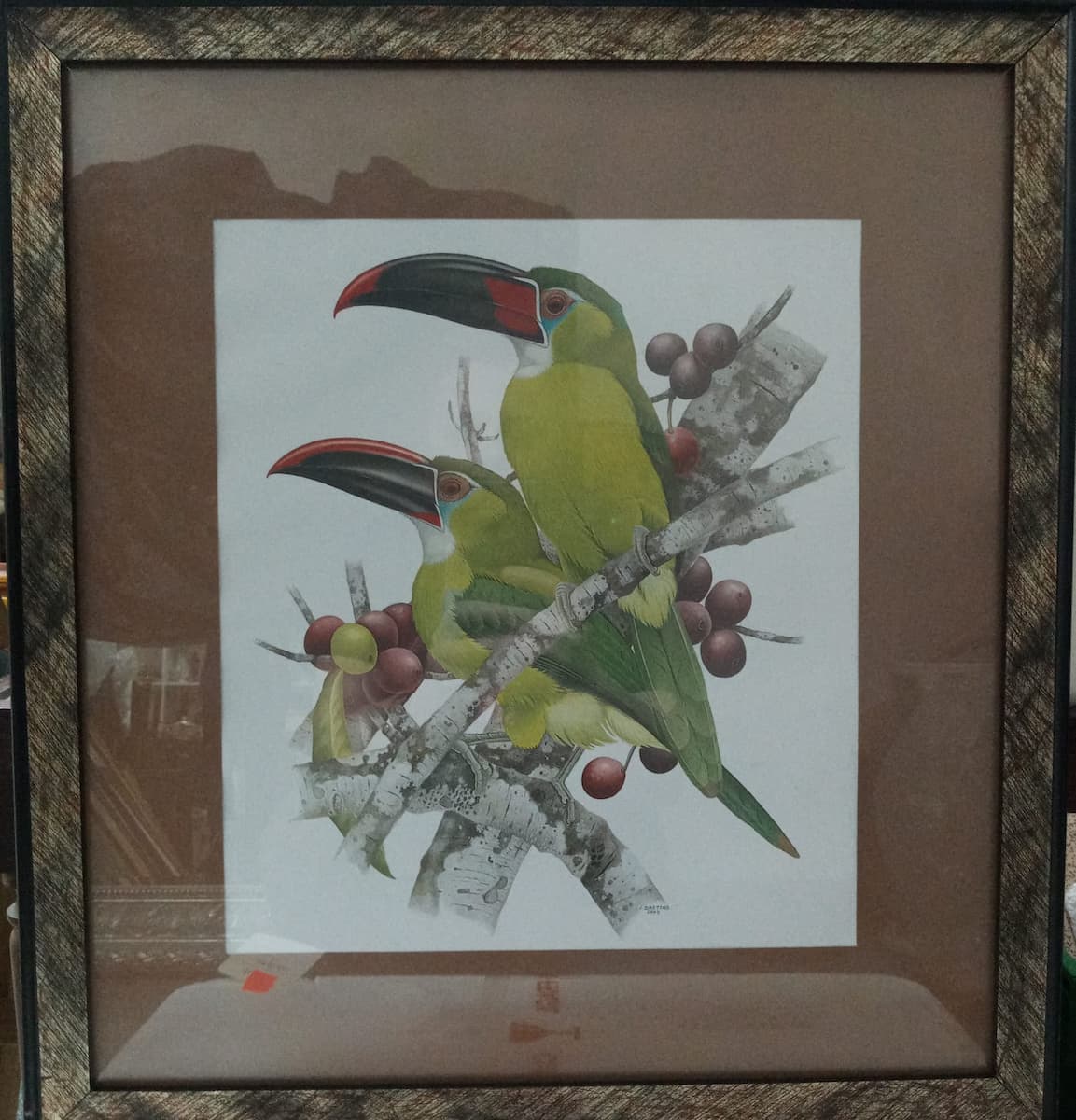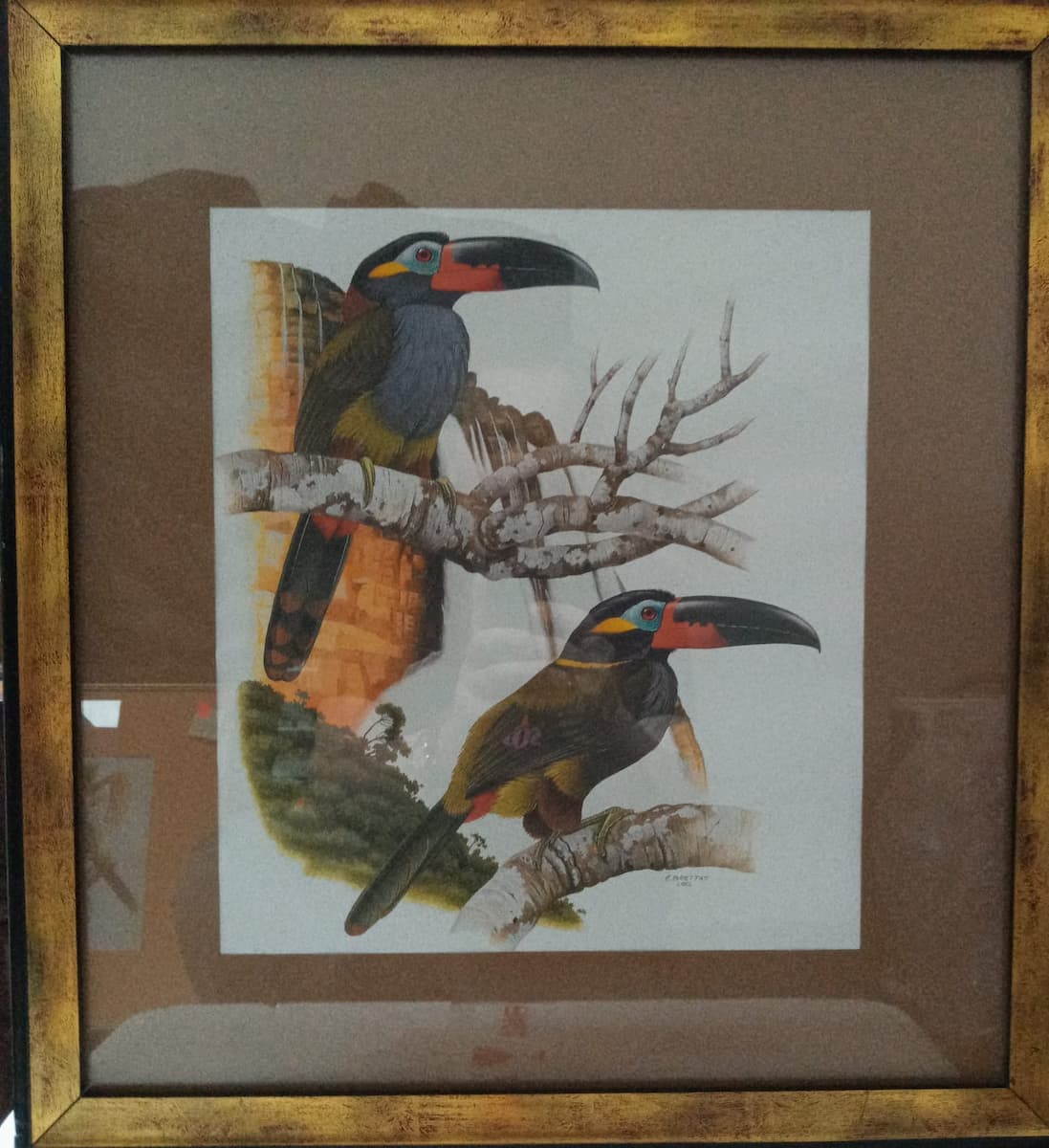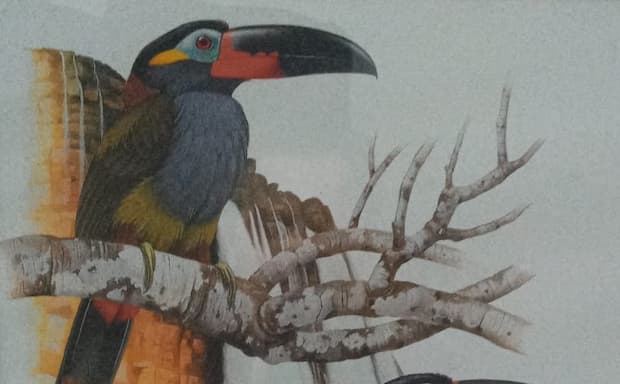“Birds of the World – toucan series” open the events calendar 2023 at Shopping Cassino Atlântico, with 50 illustrations by Eduardo Parentoni Brettas, renowned artist of Brazilian sciences.
The exhibition, curated by Luis Carlos Antonelli and Kátia Ataíde Antonelli and produced by Quimera Antiguidades, can be visited between 07 January and 11 February, confirming the importance of the toucan for sustainability.
The Shopping Cassino Atlântico open the events calendar 2023 with exhibition “Birds of the World – toucan series”, with 50 illustrations by Eduardo Parentoni Brettas, of different bird species, in addition to pieces in porcelain and Brazilian semi-precious stones, by Moreno Joalheiros, with curated by Luis Carlos Antonelli and Kátia Athayde Antonelli, and realization of Chimera Antiques, with the opening day 07 January, from the 3:00 pm.
The show takes place between days 07 January and 11 February, on the 1st and 2nd floors do local, when the visitor will be able to discover and acquire the work of such a renowned artist for the Brazilian biological sciences, Eduardo Brettas, as well as knowing the importance of the toucan for the sustainability and regeneration of forests.
Shopping Cassino Atlântico chose the toucan because its symbolism meets the philosophy of the place – Communication, expression, confidence, creativity, ressignification, inclusion and diversity. Seeing a toucan is a reminder that life is what you make of it. and, beyond the importance of art in society, we must fight for sustainability, for the preservation of life and awareness that beauty is synonymous with freedom!
The exhibition “Birds of the World – toucan series” can be visited on Avenida Atlântica, 4.240, Copacabana/Post 6, from Monday to Saturday, from 9:00 to 7:00 pm, on the 1st and 2nd floors, from day 07 January 2023 (farm), the Mall Casino Atlantic.
On Traveling Artists from the 19th Century to Today, by Solange Godoy
“Brazil at the beginning of the 19th century was the object of the greatest curiosity and interest on the part of Europeans, who only gained access after the opening of ports to friendly nations in 1808. Your exuberant nature, tropical, the immensity of its coast and the search for references of its continental territory its fauna and flora generated interest in knowing Brazil.
Austrian State Chancellor- Metternich took the general direction of a mission that came along with Princess Leopoldina's entourage with the aim of collecting collections for the Museum of Natural History of the Austrian court.
Carl Franz Anton von Schreibers, director of the Imperial Museum of Natural History, organizer and counselor of the mission to Brazil, designated, among the employees of your institution, Johann Natterer as Zoologist. Heinrich Wilhelm Schott as Botanist. Ferdinand Dominik Sochor as Huntsman and Embalmer. Botanist Johann Christian Mikan, professor of natural history at the University of Prague, was appointed scientific director of the expedition in Brazil. Johann Baptist Emanuel Pohl as mineralogist and botanist. Thomas Ender as Landscape Painter. Johann Buchberger as Botanical Painter. Rochus Schuch, librarian and mineralogist, and his assistant Franz Joseph Fruhbeck, also a painter. Johann Kammerlacher, doctor and ornithologist. G. K. Frich, painter.
At the request of Maximilian the First, king of bavaria, Johann Baptiste von Spix and Karl Philipp von Martius joined the expedition. The interests of Archduchess Leopoldina, studious of the natural sciences and curious about the fauna and flora. He was already studying and researching the collection of the Museum of Natural History in his hometown., interested in expanding their knowledge here and sharing with their, to Europe.(…)
Still in the first quarter of the 19th century, the Langsdorff expedition was consecrated 1821-1829 composed by the artists Rugendas, Hercules Florence, Aimee Adrien Taunay, who opened with their work new perspectives of knowledge about Brazil.
The works of contemporary artist Eduardo Parentoni Brettas, presented in this exhibition, follow the course of the history of discovery and fascination with the fauna of Brazil.”
About Eduardo Brettas
“Eduardo Parentoni Brettas was born in the city of Ponte Nova, Minas Gerais, Brasil, in 1962. Lives and works in Juiz de Fora (MG), where he lives with his wife Vanessa and their children, James and Richard. His first drawings of Brazilian birds date back to his free childhood in the exuberant Brazilian nature.. Had it on your mother, Indiana Parentoni Brettas, your first big fan, having encouraged his son to become a master of naturalist painting.
His works are commissioned by major centers of ornithological studies, such as the University of São Paulo – USP (Brasil) – and Princeton University (United States), museums and art galleries in different cities (Atlanta, Dubai, Rio de Janeiro, Belo Horizonte among others), plus collectors around the world. He regularly gives courses and lectures on naturalist art, in which he generously shares his talent and technique with professionals and fans of the subject.
His illustrations today enrich several important works on our fauna such as “THE BIRDS IN SANTA CATARINA”, “THE MAMMALS OF SANTA CATARINA” and other, as well as numerous illustrations in many magazines, special items, theses, various inserts and collections of watercolors. I do not intend to list them, because it would not be this quantity that would measure its value. What best characterizes Eduardo Brettas is his remarkable ability to experiment and learn the most varied techniques and demonstrate his learning in the sequence of his works..
Sign up to receive Event News
and the Universe of Arts first!
Today, with the added experience, enriching your God-given ability, I consider Eduardo Brettas a valuable asset for the biological sciences in Brazil.”
(Herculaneum Marcos Ferraz de Alvarenga, Medium and PhD in Sciences from USP, Director of the Natural History Museum of Taubaté.)
Instagram: @eduardobrettas
Facts about toucans
Toucans are birds found in the Neotropical region, occurring, therefore, also in our national territory. Usually, occupy forest regions.
The most distinguishing feature of a toucan is its large beak., laterally flattened and colored. In addition to ensuring food, the beak functions as a sexual ornament, as a sounding board and as an area for heat exchange, standing out for being highly vascularized.
Toucans vary in size depending on the species., having between 46 cm and 66 cm long. feed on fruits, however, this is not the only food in your diet; also ingest eggs and small arthropods, like locusts and cicadas. By feeding on fruits and spreading the seeds around the environment, toucans act in the seed dispersal process, being, therefore, fundamental in the regeneration of forests.
About Shopping Casino Atlântico
Casino Atlântico was one of the casinos that were located on Copacabana beach.. During a decade of 1930, baccarat games, camper, roulette, black jack and card games attracted carioca society and people from other cities (from Brazil and the world) to the place. The building of the old Casino Atlântico was demolished in the years 1970 to make way for the new hotel. Many historical moments were lived at the Casino, such as, Carmen Miranda's shows, which was right presence on the spot.
Shopping Casino Atlântico was created about 40 years and houses, for the most part, antique stores and art galleries, that bring renowned artists in Brazil and abroad. After the pandemic, the place reinvented itself and bet on diversification, with restaurants, coffee shop, events in your halls, open to hotel guests and the general public. Sophistication and comfort, between the sea and art, in one place, that will please the most demanding!
Instagram: @cassinoatlanticoshopping




